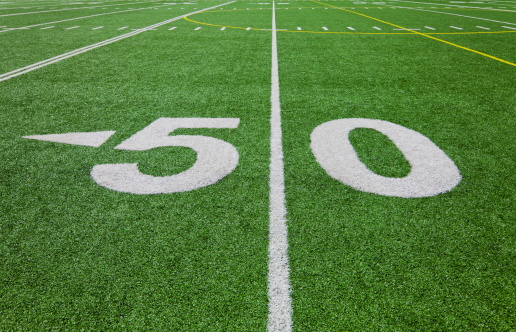News
Will Northwestern’s ‘Purple Pricing’ Kill the Secondary Ticket Market?
Published:
Last Updated:
In 2004, Google (NASDAQ: GOOG) used an unfamiliar mechanism, known as a Dutch auction, to issue shares of its IPO. Unlike a traditional auction, which lets bidders compete for an item that rises in price, a Dutch auction begins with an artificially high value that falls until the first bid is made. The point of the strategy is to squeeze the buyer’s pocketbook as tightly as possible, because in a traditional auction, he or she might’ve been willing to pay beyond the cost of the winning bid. Put simply, it doesn’t leave any money on the table.
A new revolution
A decade after the concept helped Larry Page and Sergey Brin take Google public, two Northwestern University faculty members are using it to revolutionize how tickets are sold at sporting events. Jeff Ely, Director of the NU Center for Economic Theory, and Sandeep Baliga, who teaches at the Kellogg School of Management, are behind what’s known as Purple Pricing.
A Dutch auction with a twist, the university used Purple Pricing at a handful of basketball and football games this past season. By allowing the market to set prices, Ely and Baliga’s tactics helped Northwestern improve ticket revenues by 162% when it played Ohio State in football last October. The university made almost 70% more from tickets when it hosted Michigan a month later, according to Crain’s Chicago Business. As Crain’s points out, basketball revenue was also up during the games that tested the strategy.
So what’s the twist? In a traditional Dutch auction, buyers may wait to submit a bid if they believe it’s possible to buy the item at a price below what they’re willing to pay, a phenomenon called gaming. Ely and Baliga eliminate this with a money-back guarantee. They write:
“Fans are refunded the difference between the price they paid when they purchased and the final price of the event…because a buyer will only end up paying the lowest winning price anyway, and he gets better seats the earlier he buys, he has no incentive to bid lower than what it is actually worth to him: it’s in his best interest to be completely honest.”
By ensuring buyers are honest, the seller can easily track demand at different prices, and make the appropriate decisions.
ALSO READ: Companies That Love March Madness the Most
For example, if a college football team were interested in maximizing attendance, it would simply set ticket prices at a level that coincides with a sellout. If it, on the other hand, prefers to maximize revenue, it would choose a price that does just that. In the latter scenario, the team would need precise data to determine how a change in price would affect revenue. Questions like, “Is it worth it to cut prices?” and “Will the benefits of lowering prices (more buyers) outweigh the negatives (lower margins)?” can be answered. Gaming would make this impossible.
Could it kill the secondary ticket market?
Ely and Baliga are also marketing their concept to more venues. The commercialized product, known as Ticker (the money-back guarantee is branded as Ticker Pledge), is applicable to other colleges, professional sports franchises, theaters and music festivals – literally anyone who sells tickets. It’s too early to know exactly how many will adopt the concept, but if more follow in Northwestern’s footsteps, the industry could be in store for radical change.
The $15 billion secondary ticket market, in particular, could be most affected in the future. One side effect of Purple Pricing is that it eliminates the price gap that sometimes manifests at ticket re-sellers like eBay (NASDAQ: EBAY) subsidiary StubHub, Vivid Seats, and Live Nation’s (NYSE: LYV) Ticketmaster.
“Venues often see secondary market prices that are much higher than the primary market prices they set,” Ely and Baliga write. “But if primary market prices have been set correctly by Ticker, the secondary market prices should be quite similar…because, if it is effective, Ticker should discover the underlying demand curve. Since the same demand curve obtains in the secondary market, re-sellers should not see any revenue gain.”
In theory, then, if it’s not profitable to scalp, the secondary market will eventually dry up – there’d be no point to buy and re-sell tickets.
That’s ultimately bad news for StubHub, Vivid Seats, and their peers. Because these companies make money from transaction fees, less activity would mean less revenue. Only providers that have a large footprint in the primary ticket market, like Ticketmaster, would survive.
The bottom line
Interestingly, there’s evidence this is already happening. When Purple Pricing was used at last year’s Northwestern-Ohio State football game, secondary market prices were nearly identical to primary market prices. Assuming the modified Dutch auction format catches on, it’s reasonable to think ticket re-sellers will be squeezed out in other areas too.
And at the end of the day, why shouldn’t it catch on? Like Google’s IPO, the goal of Purple Pricing, and now Ticker, is to ensure the original seller doesn’t leave any money on the table. As Ely and Baliga put it, otherwise the revenue is “lost to the secondary market.” For many venues, that’s millions, sometimes billions, of dollars a year.
If you’re one of the over 4 Million Americans set to retire this year, you may want to pay attention.
Finding a financial advisor who puts your interest first can be the difference between a rich retirement and barely getting by, and today it’s easier than ever. SmartAsset’s free tool matches you with up to three fiduciary financial advisors that serve your area in minutes. Each advisor has been carefully vetted, and must act in your best interests. Start your search now.
Don’t waste another minute; get started right here and help your retirement dreams become a retirement reality.
Thank you for reading! Have some feedback for us?
Contact the 24/7 Wall St. editorial team.